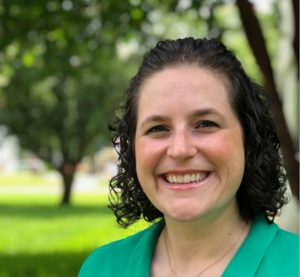By Kara Brittain
Mindfulness. Gratitude. Being present. We see these ideas swirling around social media all the time, perhaps more this year than ever before. In a year of unprecedented challenges and changes, teachers have an opportunity to help students, and themselves, think more positively about their lives.
Here are five quick ways to incorporate mindfulness in the classroom as we close out 2020:
- Encourage gratitude. If you’re in the classroom, create space on your whiteboard or somewhere on your wall and invite students to add things for which they are grateful. If you’re teaching virtually, consider a social hashtag on Twitter or Instagram or use a tool like FlipGrid to encourage conversations about gratitude.
You can ask students to:
- Share one thing there are grateful for each day or class period
- Celebrate successes of all kinds
- Write poetry inspired by gratitude
- Provide quiet time. We’re all trained to go “bell to bell” with instruction, but reflection is such a critical part of mental health. Give students some time to just rest—encourage journaling, reading, doodling, or any other relaxing quiet activity. If you’re teaching virtually, include some downtime in your video conferencing.
- Incorporate fine arts. Play relaxing music as students enter the classroom. Share period-specific pieces that relate to class readings. Show applicable paintings and discuss them for fun, not as an assignment.
- Journal away frustrations. Stress happens! Consider opening and/or ending class with some journaling time. Give prompts if desired.
- Stretch breaks! Encourage some physical movement during quiet time, or in addition to it. Stretching, standing, walking, or even taking campus strolls (if local policy allows) can reinvigorate the mind and stimulate mindfulness.
I know I always feel pressed for time in class, especially as we near the end of the semester. However, I also know I do not function at my best when my mind is occupied by numerous distractions, stressors, or anxieties. Even just a few minutes a class period can help students refocus, reenergize, and gain some perspective on life, arguably time very well spent.
For more advice about supporting AP® students while teaching online, check out this article about helping students adjust to online learning.

Kara Brittain has been teaching for 7 years after leaving a successful career in human resources and recruitment. With a background in English and Communication, she has taught courses across secondary English Language Arts, college-level Communication courses, and electives such as Debate and Independent Study & Mentorship. For the past four years, Kara has been focusing on AP® English Literature and Composition, quickly becoming a campus expert. She has a passion for helping students prepare for college and the workforce through a blend of traditional English Language Arts skills and new technology. Having taught in Texas for the last 7 years, she now lives in Louisiana with her husband and two children.
 Help
Help